This article was co-authored by Laura Marusinec, MD. Dr. Marusinec is a board certified Pediatrician at the Children's Hospital of Wisconsin, where she is on the Clinical Practice Council. She received her M.D. from the Medical College of Wisconsin School of Medicine in 1995 and completed her residency at the Medical College of Wisconsin in Pediatrics in 1998. She is a member of the American Medical Writers Association and the Society for Pediatric Urgent Care.
There are 11 references cited in this article, which can be found at the bottom of the page.
This article has been viewed 190,867 times.
Seborrheic dermatitis causes flaky patches of skin, redness, and scales. It’s also known as dandruff (when on the scalp), seborrheic eczema, seborrheic psoriasis, or cradle cap (when on infants). Aside from the scalp, it also frequently occurs on the face. This is not a sign of bad hygiene, it cannot be spread from person to person, and it won’t harm you, but it can be embarrassing. Luckily, there are ways to get rid of it.[1]
Things You Should Know
- Identify seborrheic dermatitis by the yellow, oily flakes on your face. If you aren't sure what it is, get an official diagnosis from a doctor.
- Treat seborrheic dermatitis at home by using medicated washes, warm compresses, and OTC medications.
- Try alternative medicines like aloe, fish oil supplements, and tea tree oil.
- If home remedies don't work, talk to your doctor about anti-inflammatories or antibacterial medication.
Steps
Diagnosis
-
1Identify seborrheic dermatitis on your face. People generally expect flaky skin to occur on their scalp, but it can also occur on other areas of the body, particularly areas like the face, which are oily. The oil can cause dead skin to stick together and form yellowish scales. Common symptoms are:[2]
- Areas of oily, crusty white or yellow scales on the ears, sides of the nose, or other areas of the face
- Dandruff in your eyebrows, beard, or moustache
- Redness
- Red and crusty eyelids
- Flakes that sting or itch
-
2Know when to see a doctor. If you expect that you are developing complications, or your condition is making you very unhappy, see a doctor for help treating it. Reasons to see a doctor include:
- You are very stressed out by your condition and it is interfering with your ability to live your life. This includes severe anxiety, embarrassment, and insomnia.
- You are concerned that your seborrheic dermatitis is infected. If you have pain, bleeding or pus coming from the area, it is likely infected.
- If treating it yourself isn’t working, you may need to be checked by a doctor.
Advertisement -
3Recognize if you are likely to be highly susceptible to seborrheic dermatitis. This may make it more difficult for you to get rid of it. You may need to see a dermatologist for help treating it if:[3]
- You have a psychiatric condition like depression, or a neurological condition like Parkinson's disease.
- Your immune system is weak. This includes people who have received organ transplants, people with HIV, alcoholic pancreatitis, or cancer.[4]
- You have heart problems.
- You have damaged skin on your face.
- You are exposed to extreme weather conditions.
- You are obese.
Home-Care Methods
-
1Wash your face twice a day. This will rinse off excess oil and prevent dead skin cells from sticking to the skin underneath and forming scales.[5]
- Use a mild soap that won’t irritate your skin. If your eyelids are affected, use baby shampoo to clean them.
- Don’t use products with alcohol on your skin. This will irritate it and may make the condition worse.
- Use a non-oily moisturizer which won’t clog your pores. Use one that says non-comedogenic and oil-free on the label.
-
2Try using medicated shampoos. Even though they are meant for your scalp, they will also help seborrheic dermatitis on the face. Rub them in gently and leave them on for the length of time recommended in the instructions. Then rinse the area thoroughly. You can try:[6]
- Shampoos with pyrithione zinc (Head & Shoulders) or selenium (Selsun Blue). These can be used daily.
- Antifungal shampoos. These should only be used twice a week.
- Shampoos with tar (Neutrogena T/Gel, DHS Tar). This may cause contact dermatitis or skin irritation, so it should only be applied to the areas with seborrheic dermatitis.
- Shampoos with salicylic acid (Neutrogena T/Sal). These can be used daily.
- You can try each of these to see what works best for you. You can also alternate between types if they seem to lose their effectiveness after a while. Be careful not to get them in your eyes.
- Consult a doctor before using these shampoos if you are pregnant or treating a child.
-
3Soften the scales with oil. This method will help you easily and painlessly remove some of the scales. Massage oil into the scaly areas and then let it soak in. Leave it on for at least an hour, then wash it off using warm water. Rubbing gently with a washcloth should wipe away some of the softened scales. You can use different oils, depending on what you prefer:
- Commercially produced baby oil. This is best if you are treating a child.
- Mineral oil
- Olive oil
- Coconut oil
-
4Apply warm compresses. This technique is particularly good if you have scaly patches on your eyelids.
- Create a warm compress using a washcloth dipped in hot water. This method is gentle for the delicate skin around your eyes and won’t get any soap in your eyes.
- Hold it over your eyelids until the scales soften and can be gently wiped away.
- Don’t peel the scales away if they don’t come off. You don’t want to break the skin and risk an infection.
-
5Avoid holding the oils from your skin against your face. Unlike treatments where you soften the scales with oil and then wipe them away, when skin oils build up they stay on your skin for hours. This causes dead skin cells to stick to the surface of the healthy skin instead of sloughing off. This can be minimized in several ways:
- Tie back long hair to prevent transferring oils from your hair to your face.
- Don’t wear a hat. A hat will absorb oils and hold them against your skin.
- Shave your beard or moustache if you have seborrheic dermatitis underneath. This will make it easier to treat and it will prevent oils from your beard or moustache hair from making it worse.
-
6Apply over-the-counter medications. They will help reduce redness, and if you have an infection, it will promote healing by fighting it.
- Try a cortisone cream to lessen itching and inflammation.
- Use an antifungal cream such as ketoconazole. This will prevent or kill a fungal infection and reduce itching and inflammation.
- Read and follow all instructions on the packaging. If you are pregnant or treating a child, consult a doctor before using these medications. Don't use these creams for longer than two weeks without consulting a doctor.
-
7Treat itching instead of scratching. Scratching will irritate the skin and you risk an infection if you break the skin. If itches, apply anti-itch medications instead:
- Use hydrocortisone. This will reduce itching and inflammation, but it should not be used continuously for weeks because it may cause the skin to thin.[7]
- Try calamine lotion. This will relieve the itching, and may have a drying effect.[8]
- Apply a cold compress to the area, which can soothe itching. Use an icepack wrapped in a towel or a washcloth soaked in ice water.
- Consider an oral antihistamine if you are itching at night. If your itching is keeping you awake, an antihistamine like Benadryl or Zyrtec may ease the itching sensation. These medications also tend to make people drowsy, which can help you fall asleep despite any itching you may experience.
-
8Try alternative medicines. These methods have not been thoroughly and scientifically tested, but anecdotal evidence suggests they may be useful. Always consult your doctor before using alternative medicines to be sure that they are right for you and won't interact with any medications you may be taking or other conditions you may have. This is particularly important if you are pregnant or treating a child. Some options are:[9]
- Aloe. You can get commercially prepared mixtures and apply them or, if you have an aloe plant in your house, split open a leaf to reveal the gel inside. Then smear this cool, soothing gel over your skin.
- Fish oil supplements. Fish oil has omega-3 fatty acids which are good for your skin. Taking these supplements may help.
- Tea tree oil. Tea tree oil has antiseptic properties that may help kill an infection that could be preventing healing. To apply it, create a five percent tea tree oil solution. Mix a ratio of one part tea tree oil to 19 parts warm water. Using a sterile cotton swab, apply this to the affected area and leave it on for about 20 minutes. Then wash it off. Be aware that some people are allergic to tea tree oil and shouldn’t use it.[10]
-
9Reduce stress. Stress may cause hormonal changes that may make you vulnerable to skin conditions. There are several ways to manage stress:[11]
- Exercise for about two-and-a-half hours per week.
- Get seven to nine hours of sleep a night.
- Use relaxation techniques such as meditation, massage, visualizing calming images, yoga, and deep breathing.
Medical Care
-
1Ask your doctor for medications to reduce the inflammation. The doctor may prescribe creams or ointments for short-term use, as some of these may make your skin thinner if used over a long period of time:[12]
- Hydrocortisone creams
- Fluocinolone
- Desonide (DesOwen, Desonide)
-
2Use a prescription-strength antibacterial. A common one contains metronidazole (MetroLotion, Metrogel) which can be obtained as a topical cream or gel.[13]
- Apply it according to the manufacturer’s instructions or as directed by your doctor.
-
3Discuss using an antifungal medication together with other medications. If your doctor thinks a fungal infection may be preventing healing, this may help, particularly if areas under a beard or moustache are affected:[14]
- Alternate an antifungal shampoo with a weaker steroid, like hydrocortisone, desonide, fluocinolone.
- Try an oral antifungal like terbinafine (Lamisil); however, this medication may cause serious allergic reactions and liver damage.
-
4
-
5Try light therapy combined with medication. The medication, called psoralen, makes you more sensitive to ultraviolet light. After taking it, you are given light therapy to treat the seborrheic dermatitis. The side effects of this treatment may be serious, including burns or discoloration of the skin.[17]
- You may have an increased risk of skin cancer.
- If you get this treatment, you should wear UV-protective sunglasses to avoid eye damage and cataracts.
- This treatment may not be appropriate for children.
Expert Q&A
Did you know you can get expert answers for this article?
Unlock expert answers by supporting wikiHow
-
QuestionHow do I fade redness on my cheeks? I have mild seborrheic dermatitis.
 Laura Marusinec, MDDr. Marusinec is a board certified Pediatrician at the Children's Hospital of Wisconsin, where she is on the Clinical Practice Council. She received her M.D. from the Medical College of Wisconsin School of Medicine in 1995 and completed her residency at the Medical College of Wisconsin in Pediatrics in 1998. She is a member of the American Medical Writers Association and the Society for Pediatric Urgent Care.
Laura Marusinec, MDDr. Marusinec is a board certified Pediatrician at the Children's Hospital of Wisconsin, where she is on the Clinical Practice Council. She received her M.D. from the Medical College of Wisconsin School of Medicine in 1995 and completed her residency at the Medical College of Wisconsin in Pediatrics in 1998. She is a member of the American Medical Writers Association and the Society for Pediatric Urgent Care.
Board Certified Pediatrician
-
QuestionHow should I treat seborrheic dermatitis of the scalp?
 Laura Marusinec, MDDr. Marusinec is a board certified Pediatrician at the Children's Hospital of Wisconsin, where she is on the Clinical Practice Council. She received her M.D. from the Medical College of Wisconsin School of Medicine in 1995 and completed her residency at the Medical College of Wisconsin in Pediatrics in 1998. She is a member of the American Medical Writers Association and the Society for Pediatric Urgent Care.
Laura Marusinec, MDDr. Marusinec is a board certified Pediatrician at the Children's Hospital of Wisconsin, where she is on the Clinical Practice Council. She received her M.D. from the Medical College of Wisconsin School of Medicine in 1995 and completed her residency at the Medical College of Wisconsin in Pediatrics in 1998. She is a member of the American Medical Writers Association and the Society for Pediatric Urgent Care.
Board Certified Pediatrician
References
- ↑ https://my.clevelandclinic.org/health/diseases/14403-seborrheic-dermatitis
- ↑ https://nationaleczema.org/eczema/types-of-eczema/seborrheic-dermatitis/
- ↑ https://www.nlm.nih.gov/medlineplus/ency/article/000963.htm
- ↑ https://www.aad.org/public/diseases/a-z/seborrheic-dermatitis-causes
- ↑ https://www.aad.org/public/diseases/a-z/seborrheic-dermatitis-self-care
- ↑ https://www.aad.org/public/diseases/a-z/seborrheic-dermatitis-self-care
- ↑ https://dermnetnz.org/topics/seborrhoeic-dermatitis
- ↑ http://www.mayoclinic.org/drugs-supplements/calamine-topical-route/description/drg-20062463
- ↑ http://www.mayoclinic.org/diseases-conditions/seborrheic-dermatitis/basics/alternative-medicine/con-20031872
- ↑ http://www.mayoclinic.org/drugs-supplements/tea-tree-oil/dosing/hrb-20060086
- ↑ https://www.nlm.nih.gov/medlineplus/ency/article/000963.htm
- ↑ https://my.clevelandclinic.org/health/diseases/14403-seborrheic-dermatitis
- ↑ https://my.clevelandclinic.org/health/diseases/14403-seborrheic-dermatitis
- ↑ http://www.mayoclinic.org/diseases-conditions/seborrheic-dermatitis/basics/treatment/con-20031872
- ↑ https://www.nlm.nih.gov/medlineplus/ency/article/000963.htm
- ↑ http://www.mayoclinic.org/diseases-conditions/seborrheic-dermatitis/basics/treatment/con-20031872
- ↑ https://www.health.com/condition/eczema/light-therapy-atopic-dermatitis
About This Article
To treat seborrheic dermatitis on your face, use a mild soap to wash your face twice a day. You can also try washing your face with a medicated shampoo, such as Head & Shoulders or Selsun Blue. Alternatively, massage olive or coconut oil into the scaly areas to soften the scales. Then, after an hour, use a washcloth and warm water to gently wipe away the scales. If you're dealing with itching and inflammation, try calming your skin with hydrocortisone, calamine lotion, or cold compresses. To learn how to treat your seborrheic dermatitis with tea tree oil, keep reading!
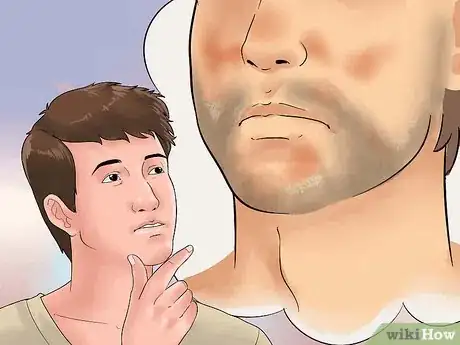

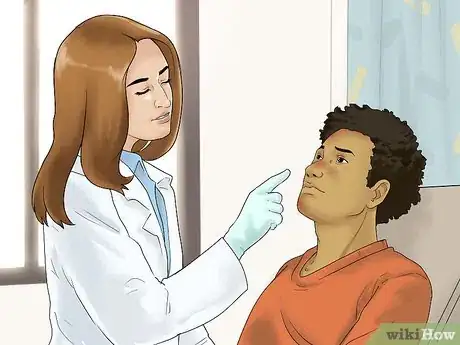
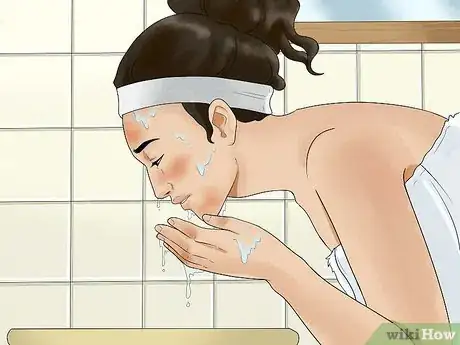
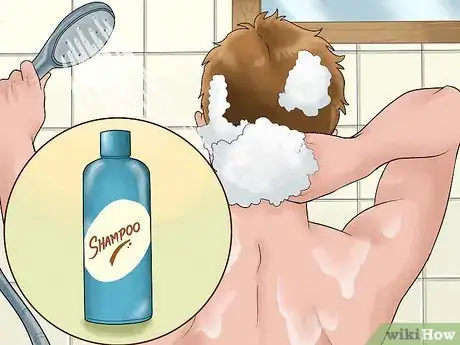
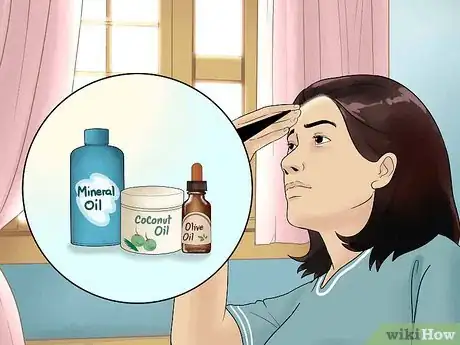
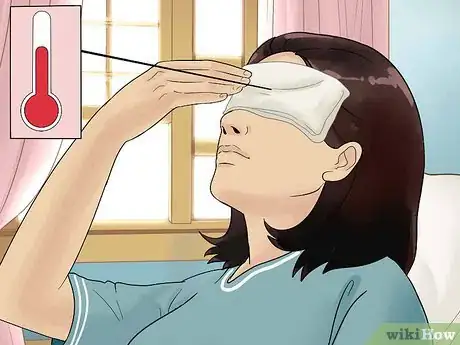
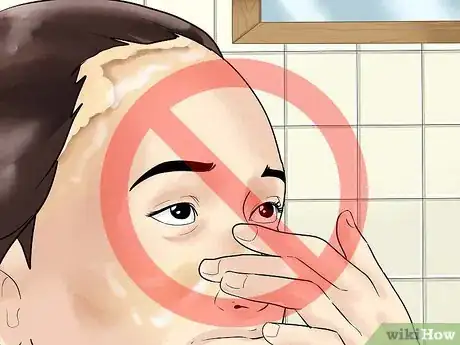
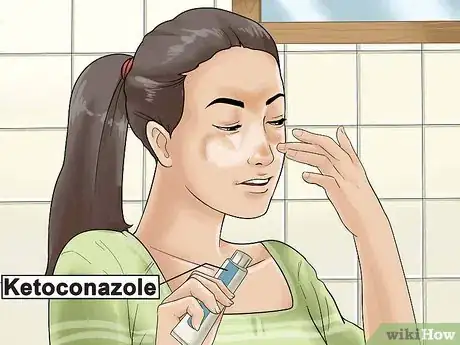
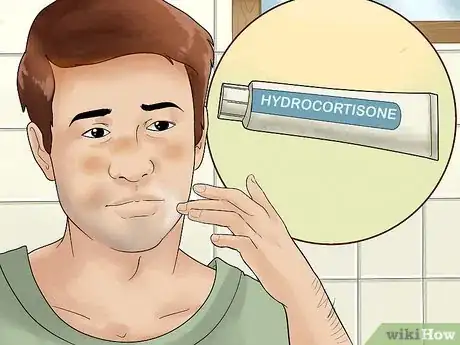
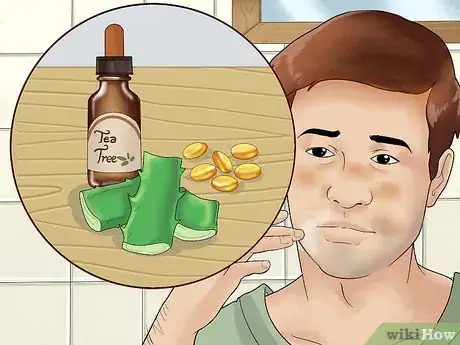


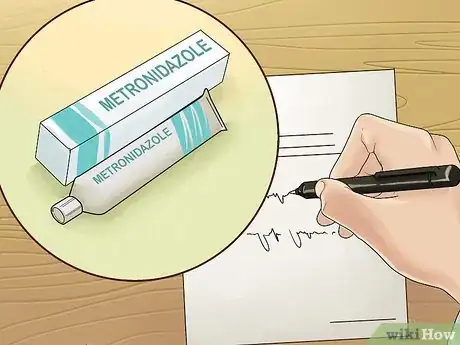
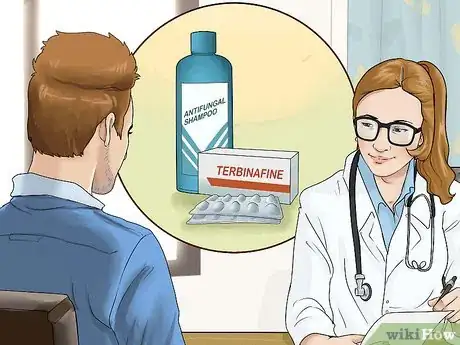
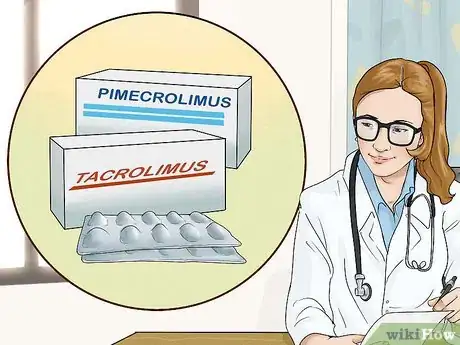
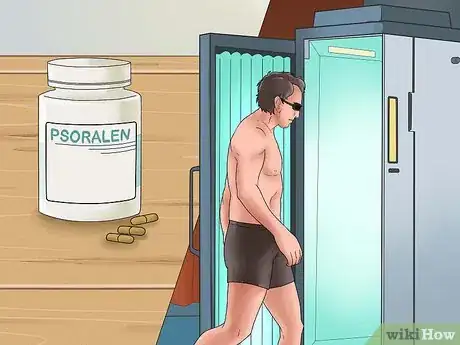



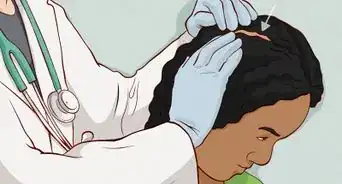





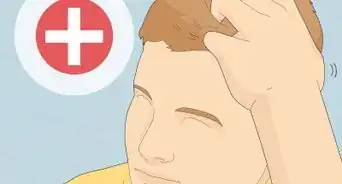
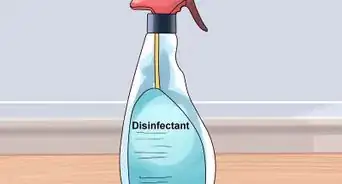

-Step-14-Version-7.webp)


















































Medical Disclaimer
The content of this article is not intended to be a substitute for professional medical advice, examination, diagnosis, or treatment. You should always contact your doctor or other qualified healthcare professional before starting, changing, or stopping any kind of health treatment.
Read More...